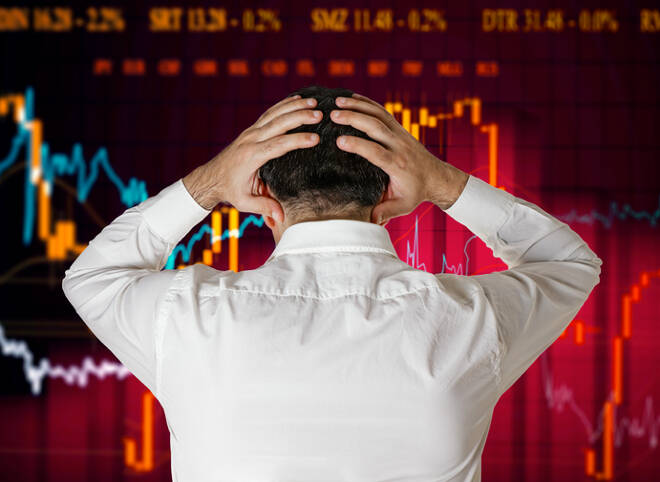Advertisement
Advertisement
US Stock Market: Summer’s Smooth Rise Gives Way to Choppy Ride
By:
Essentially, we are likely to see a prolonged battle between momentum traders and value investors.
The major U.S. stock indexes declined for a second straight week, as technology shares went through their worst retreat since March. Investors found no single catalyst for the decline, which left the NASDAQ Composite about 10% below its all-time high reached just six trading sessions ago. However, in evaluating the big picture, skepticism about a compromise on a coronavirus stimulus package before the November election, and signs of slowing momentum in the labor market all contributed to the negative sentiment.
In the cash market last week, the benchmark S&P 500 Index settled at 3340.97, down 159.34 or -4.55%. The blue chip Dow Jones Industrial Average finished at 27665.64, down 764.41 or -2.69% and the tech-driven NASDAQ Composite closed at 10853.55, down 921.91 or -7.83%.
While most investment professionals believe a longer-term recovery is under way, and stocks other than technology issues will benefit once the entire economy reopens, we do feel that stocks have likely entered a more volatile period than the one experienced in the Spring and Summer months. Unfortunately, this could lead to a wide consolidation pattern.
We’ve Entered the Bumpier Stage of the Economic Recovery
Despite the unprecedented, unpredictable and unruly path of the COVID-19 pandemic, analysts at Edward Jones have observed a pattern to the economic recovery to date that they believe can be defined by three distinct stages:
Stage 1: A severe recession.
Stage 2: A sharp early rebound
Stage 3: A slow recovery back to pre-pandemic levels.
“In Stage 1, with lockdown measures firmly in place in April and May, the economy suffered its greatest economic decline since the Great Depression, the unemployment rate skyrocketed to a record high, inflation plummeted, and corporate earnings sank.”
“In Stage 2, as the country began to gradually reopen in June, the economy displayed a sharp bounce-back in growth, fueled by strong fiscal stimulus, near-zero interest rates, and unleashed consumer demand.”
“Following this initial bounce in economic activity, we think the recovery will transition to Stage 3, defined by a bumpy road back to pre-pandemic levels of growth.”
Rally May Not Have Come to an End, but There Will Be a Price to Pay
Despite the wild swings in the market over the last two weeks, we don’t think the rally has come to an end. But even if the major indexes rally to new highs, they will be susceptible to bouts of vicious down swings.
Essentially, we are likely to see a prolonged battle between momentum traders and value investors. Some traders will prefer to chase the rally in anticipation of the end of the pandemic then dump stocks when they become overvalued, or the pandemic worsens, while others will favor waiting for pullbacks into value areas, and be willing to patiently wait for the recovery to unfold.
For a look at all of today’s economic events, check out our economic calendar.
About the Author
James Hyerczykauthor
James Hyerczyk is a U.S. based seasoned technical analyst and educator with over 40 years of experience in market analysis and trading, specializing in chart patterns and price movement. He is the author of two books on technical analysis and has a background in both futures and stock markets.
Advertisement
